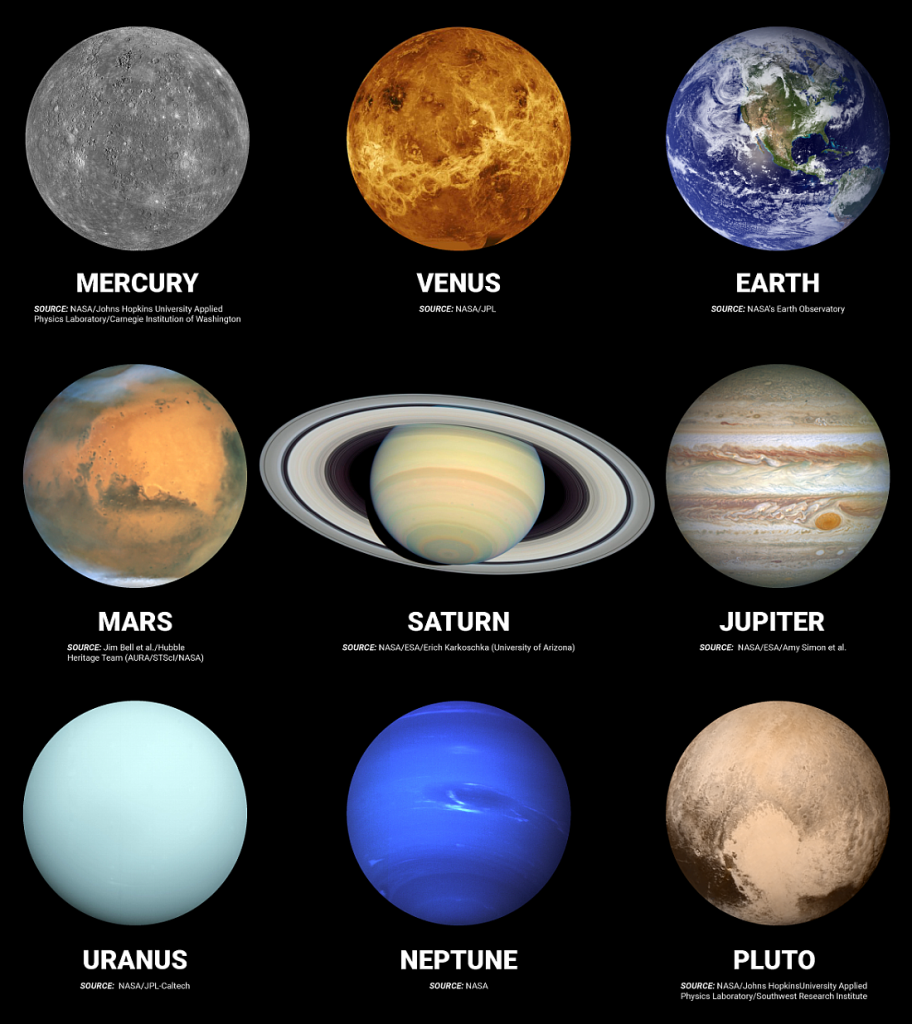All the planets visible in the night sky are members of the Sun’s family or the solar system. Planets shine with a steady light while real stars often twinkle. This is because a planet is a disc of light, whereas a star is so distant that it is always just a point of light. The Sun is a typical star in that it radiates heat and light of its own, but the planets shine only by the light they reflect from the Sun. Most stars are much larger than planets. The five planets that can be seen without the aid of a telescope are Mercury, Venus, Mars, Jupiter, and Saturn. After the invention of the telescope, astronomers discovered three more distant planets – Uranus in 1781, Neptune in 1846 and Pluto in 1930.
The eight planets in the order of their distance from the Sun are Mercury, Venus, Earth, Mars, Jupiter, Saturn, Uranus, Neptune, Pluto (dwarf planet). All eight planets travel in the same direction as they orbit around the Sun. The planets closest to the Sun take the least time in orbit. For example Mercury, nearest to the Sun, makes a circuit in only 88 days, Earth takes a year and Jupiter almost 12 years.
The Sun’s family has other members apart from planets. Swarming between Mars and Jupiter are thousands of asteroids or minor planets. Comets with their streaming tails approach the Sun from the farthest parts of the solar system. Besides, dust and stones called meteoroids scattered in the space between the planets. Meteoroids burn up if they crash through the Earth’s atmosphere, creating meteor trails or shooting stars.

The exploration of most of the planets in the solar system is a major scientific achievement of the twentieth century. Men in space have landed on the Moon and brought back samples from its surface. The five planets that are visible to the naked eye – along with other Moons from those of Mars to the satellites of Saturn have been investigated and photographed by uncrewed spacecraft.